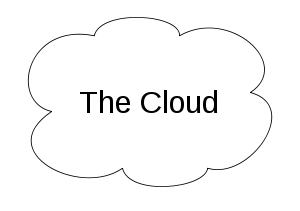E-discovery solutions have naturally been classified as litigation support, and in this post I'll go over why this area continues to be of growing concern. In another section, I will cover why the same solutions which provide litigation support can also help to solve internal investigations as well.
First, rising litigation highlights the importance of e-Discovery. In Fulbright's most recent survey litigation survey, over 90% of U.S. and U.K. respondents expecting legal disputes to increase or remain the same:
…93% of U.S. and 97% of U.K. respondents expecting legal disputes to increase or remain the same this coming year. This expectation comes during a year when 87% of U.S. respondents faced new litigation in the past year (up from 83% last year) and 53% of all respondents initiated a suit in the past year (up from 48% overall last year)....In the U.S. – and for large-caps in particular – intellectual property and patent litigation are also high on respondents’ radars.
And, according to the same study, "More regulators have been investigating a greater variety of companies, from small to large and across sectors – particularly banking, health care and energy." Rampant regulatory changes and stricter enforcement seem to have increased the need for the ability to find documents within an enterprise.
Like most things, cost produces the constraints which this process work around. Bringing discovery in-house reduces the cost at an astonishing rate. Patrick Oot, a member of the Law Technology News Editorial Advisory Board, is director of electronic discovery and senior litigation counsel at Verizon, based in Washington, D.C. says:
In July 2008, our EDD team completed a business case that presented an opportunity for Verizon to save about $4 million in legal expenses in one year by establishing an in-house system, with support staff, infrastructure and software for internal data processing, hosting and review. We believe that over the next three years, this business case will yield up to potential 395 percent return on investment.
Following this example, both NBC and Microsoft have moved their discovery internally. At NBC, Jonathan Chow -Chief Information Security Officer (CISO) - heads the IT implementation and explained to ComputerWorld that, as with many corporations, the information security department includes e-discovery as a key responsibility for litigation support, M&A activities, and internal investigations. The move in-house allows NBC to administer searches and investigations internally without the dubious cost of hiring outside vendors.
E-discovery Used Internally
E-discovery solutions have traditionally only been seen as a litigation support tool. But no longer. Today, savvy businesses are using the same tools to solve internal investigations, regulatory compliance and records management issues.
The use of e-discovery tools in internal investigations remains vital for international corporations as well as domestic outfits. All major companies need the ability to search electronically stored information ( ESI) to complete internal investigations that may be generated by HR or corporate security. No matter the regulatory environment, personnel misconduct and fraud detection must be of vital importance for any company - and a particular worry for CISOs, Chief Security Officers, General Counsels, and CEOs. Unauthorized access to sell or manipulate data and sexual harassment or other inappropriate communication has become all too common, and internal investigations have become ever more important as a result.
Compliance with government regulations remains of great importance to industries such as financial services and healthcare as well as the broader set of publically listed companies. NASD, SEC, and HIPAA govern strict regulations on the retention of e-mail and other ESI. As a part of information management and security, e-discovery tools like ZL’s Unifed Archive can manage the retention (or destruction) schedules for ESI based on a granular set of rules. If a company’s ESI were sand in a box, ZL’s proactive e-discovery tool is a very speedy fine-toothed comb.
As the application of e-discovery tools expand, many companies find that classifying them purely as litigation support can be a misnomer. The discovery function serves both litigation support and internal investigations due to the increasing need to hold employees accountable to company policies. No matter the name, the ability to search through a company's ESI remains a pillar of responsible corporate governance.























